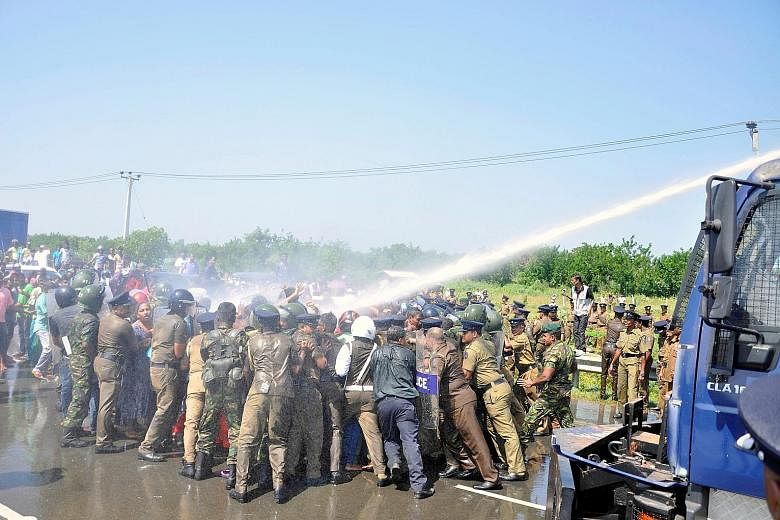HAMBANTOTA • Sri Lankan police used tear gas and water cannon to disperse hundreds of stone-throwing demonstrators protesting against a planned investment zone supported by China.
Hospital officials said at least 21 people were injured in Saturday's protests. According to police, 52 demonstrators were arrested.
Protesters say that the government of President Maithripala Sirisena is trying to evict thousands of families to provide 6,070ha of land in the projected industrial zone for Chinese investors.
The zone is in the southern district of Hambantota, where China has already built a US$1.5 billion (S$2.2 billion) port and airport, part of President Sirisena's ambitious US$50 billion development project to revive the economy.
The government has denied the protesters' claims and says opposition is driven by former president Mahinda Rajapaksa's political ambitions. Mr Rajapaksa, who is trying to make a political comeback, has publicly criticised the plan, saying it will deprive people of agricultural land.
At Saturday's opening of the investment zone, Chinese Ambassador Yi Xianliang struck an upbeat note. "This is the moment for China to help other countries which need investments," he said at the launch. "No force can stop the cooperation from China to Sri Lanka."
He also said the investment zone would be the most important economic project of this government and "if everything goes well", China would invest US$5 billion during the next three to five years and create 100,000 jobs.
President Sirisena's government is already in the final phase of discussion with China Merchants Port Holdings Company to develop the China-built port, granting it an 80 per cent stake on a 99-year lease for US$1.12 billion.
China's interest in the port may reflect its ambition to build a "Maritime Silk Route" to the oil-rich Middle East and onwards to Europe.
That makes some countries, including India and the United States, nervous with Sri Lanka's proximity to shipping lanes through which much of the world's trade passes en route to China and Japan.
The port was built with Chinese loans and contractors in 2010 under Mr Rajapaksa, as part of efforts to develop infrastructure after a 26-year war ended in 2009.
REUTERS

